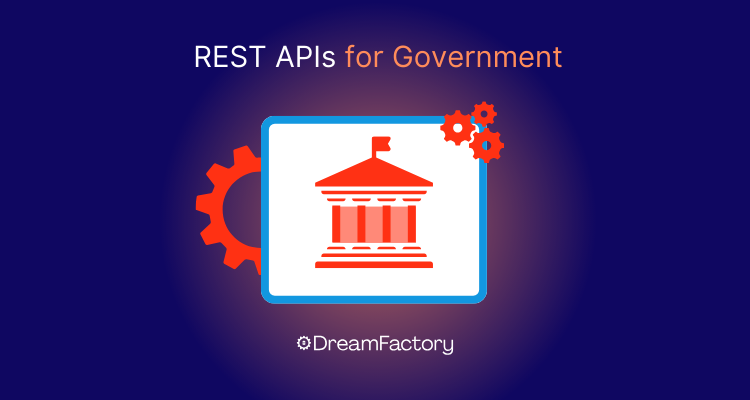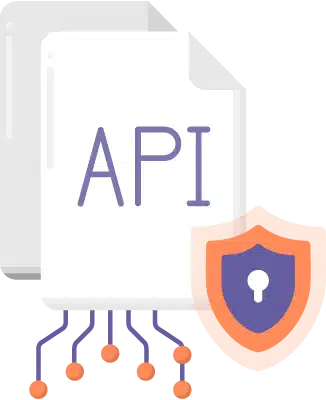REST APIs for Government
by Spencer Nguyen • February 8, 2024

REST APIs are emerging as a simple and secure way to access sensitive government data, serving as conduits that enable seamless access and manipulation of data across various government systems. Government agencies face the pressing need to modernize their IT infrastructure to improve service delivery, enhance operational efficiency, and ensure the security of data exchanges. REST APIs for government have emerged as a pivotal technology in this transformation, offering a pathway to more agile, transparent, and responsive government services. However, integrating these APIs with legacy systems, ensuring data security, and managing the migration process presents a complex set of challenges. This blog explores the multifaceted role of REST APIs in government services, from enhancing public health and transportation to environmental monitoring and public safety.
Here’s five key takeaways from this article:
- REST APIs are pivotal in modernizing government IT infrastructure, offering secure access to sensitive data, improving service delivery, and ensuring operational efficiency.
- They facilitate seamless interoperability across various government systems, enhance data management, and ensure compliance with security standards, making them essential for modern governance.
- APIs enable real-time tracking in public health, improve transportation networks with up-to-date traffic data, support environmental monitoring through accessible air and water quality data, and enhance public safety by coordinating emergency response efforts.
- DreamFactory significantly simplifies the integration of REST APIs in government services by automating API creation, ensuring data security, and facilitating legacy system upgrades, thereby enhancing operational efficiency and service quality.
- With DreamFactory, government agencies can overcome the challenges of data integration and legacy system modernization, streamlining the delivery of public services and improving citizen engagement.
Table of Contents
- Benefits of REST APIs for Government Services
- Challenges of Legacy Systems and Data Migration
- Example Use Cases for APIs in Government Services
- How DreamFactory Streamlines Data Exchange for Government Services
- Getting Started with DreamFactory

Generate a full-featured, documented, and secure REST API in minutes.
Generate a full-featured, documented, and secure REST API in minutes.
Benefits of REST APIs for Government Services
Employing the use of REST APIs in government services provides a multitude of benefits. In this section, we’ll cover just some of the most important ones.
Enhances Efficiency and Reducing Operational Costs
REST APIs stand as a cornerstone in modernizing government IT infrastructure. By adopting these APIs, agencies can significantly streamline processes, eliminating redundant systems and automating data exchange. This leads to a noticeable reduction in operational costs. For instance, rather than maintaining disparate databases, a unified API framework can provide a singular access point for multiple services, enhancing both efficiency and cost-effectiveness, as well as streamlining processes by providing a unified interface for accessing various services, thereby minimizing operational redundancies and simplifying system integrations.
Improves Public Access to Government Services and Info
One of the primary mandates of government agencies is to be accessible to the public they serve. REST APIs play a pivotal role here. By implementing APIs, governments can offer citizens seamless access to services and vital information through various digital channels. Whether it's filing tax returns, applying for permits, or accessing public records, APIs simplify these interactions, making them more user-friendly and less time-consuming.
Facilitates Inter-agency Data Sharing and Collaboration
Collaboration across different government agencies often faces hurdles due to incompatible systems. REST APIs offer a solution. They act as a universal language, enabling different systems to communicate effectively. This interoperability is crucial for coordinating efforts, especially in areas like national security, public health, and disaster management, where synchronized data exchange is vital.
Enables Real-time Data Feeds and Service Delivery
In an era where information changes rapidly, the ability to provide real-time data is essential. REST APIs facilitate this by allowing government services to offer up-to-the-minute information. This is especially important in critical sectors like public safety, healthcare, and transportation. By leveraging APIs for real-time data feeds, government services can respond more swiftly and accurately to dynamic situations, from updating public transport schedules to issuing emergency alerts.
Challenges of Legacy Systems and Data Migration
Integrating REST APIs into existing government IT infrastructure, often characterized by legacy systems, presents a complex challenge. These older systems, typically built on outdated technology, were not designed to interface seamlessly with the modern, flexible architecture of APIs. The process demands a meticulous approach to ensure that the integration does not disrupt existing services. This integration must be managed with precision, often requiring custom solutions to bridge the technological gap between new API-driven applications and the old systems.
Migrating data to API-driven systems is a critical step in modernization. It involves moving large volumes of sensitive and essential data, which must be executed without loss or corruption. Strategies such as incremental migration, where data is moved in phases, and parallel running, where old and new systems run simultaneously for a period, are effective. Ensuring data integrity and security during this process is paramount. Additionally, training staff to manage and operate new API-based systems is crucial for a smooth transition.
Compatibility and interoperability pose significant hurdles in integrating APIs with legacy systems. It's essential to develop APIs that can communicate with a range of different systems and formats. Middleware solutions, which act as intermediaries to translate and route data between disparate systems, are often employed. Ensuring standardization in data formats and protocols is another key approach to overcoming these challenges, promoting seamless data exchange and system integration.
Example Use Cases for APIs in Government Services
Public Health: APIs for Disease Tracking and Health Data Analysis
APIs revolutionize public health management by enabling real-time tracking of disease outbreaks and facilitating the analysis of health data across various platforms. APIs allow for the swift aggregation and dissemination of critical health data, enabling health authorities to make informed decisions, predict outbreaks, and deploy resources efficiently.
Transportation: Real-time Traffic Data and Public Transit APIs
In transportation, APIs serve as the backbone for real-time data sharing on traffic conditions, public transit schedules, and route optimization. This not only improves the commuter experience by providing up-to-date information but also enhances the management of transportation networks, allowing for dynamic adjustments to service offerings based on real-time demand and conditions.
Environmental Monitoring: APIs for Air Quality and Water Safety Data
APIs also play a pivotal role in environmental monitoring by facilitating the collection and sharing of data on air quality and water safety. Through APIs, government agencies can provide public access to real-time environmental data, empowering citizens with the information needed to make health-conscious decisions. Additionally, this data aids in the formulation of environmental policies and the timely response to pollution incidents.
Public Safety: APIs for Emergency Response Coordination
In the realm of public safety, APIs are instrumental in coordinating emergency response efforts. By integrating various communication platforms and information databases, APIs ensure that emergency services can access and share critical information swiftly. This results in a more coordinated response to disasters, enhancing the effectiveness of rescue operations and potentially saving lives.
These use cases underscore the transformative potential of APIs in government services, driving improvements in public health, transportation, environmental monitoring, and public safety. Through the strategic application of APIs, government agencies can enhance service delivery, foster transparency, and improve the quality of life for citizens.
Without APIs, addressing challenges in public health, transportation, environmental monitoring, and public safety becomes significantly harder, as these areas require agile, scalable, and interoperable technology solutions that legacy systems cannot easily provide.
How DreamFactory Streamlines Data Exchange for Government Services
DreamFactory emerges as a critical tool for government agencies, especially in areas requiring complex data integration and management, similar to its impact in the healthcare industry. By generating REST APIs with minimal effort, DreamFactory addresses several crucial needs in government IT infrastructure:
- Interoperability Across Systems: In government operations, various applications—from public records management to emergency response systems—need to communicate flawlessly. DreamFactory's REST APIs serve as essential connectors, facilitating seamless data flow between diverse systems, ensuring operational coherence and efficiency across different government departments.
- Enhanced Data Management: For government entities, managing data securely and efficiently is paramount. DreamFactory’s REST APIs enable secure data exchanges across departments, streamlining processes such as document handling, application processing, and service delivery. This not only minimizes manual data entry errors but also supports integration with external applications, improving citizen engagement and service quality.
- Security and Compliance: Given the government's obligation to protect sensitive information and comply with legal standards, DreamFactory's commitment to security is invaluable. It supports the implementation of advanced authentication and encryption protocols, ensuring that all data exchanges meet the strictest security and privacy requirements, as well as being compliant with GDPR and HIPAA with RBAC and API key management.
- Legacy System Integration: Many government agencies face the challenge of updating their legacy systems without disrupting current operations. DreamFactory facilitates this transition, enabling these older systems to connect with modern applications through REST APIs. This capability is vital for ensuring smooth data migration and reducing the complexities often associated with system integrations.
- Operational Efficiency: By automating the creation of APIs, DreamFactory significantly cuts down development time and associated costs. This efficiency allows government IT departments to allocate more resources to improving the delivery of public services, thereby enhancing the overall quality and accessibility of government programs.

Generate a full-featured, documented, and secure REST API in minutes.
Generate a full-featured, documented, and secure REST API in minutes.
Getting Started with DreamFactory
Building REST APIs for government agencies by hand is expensive and time consuming. There is no guarantee that the results will be reliable, scalable, or secure. For all of these reasons, the DreamFactory REST API platform is an excellent choice.
DreamFactory makes it very easy to safely expose a database or services as a REST API for patient information, partner integration or mobile development. The platform is highly scalable, extremely reliable, and the security has been tested by hundreds of thousands of developers.
Governments are experiencing an ongoing technical transformation of old systems and processes. If you want to find out more about how you can streamline data migration and upgrade legacy systems check out our series on legacy systems:
TL;DR - GET AN AI SUMMARY
AI SUMMARY
READY TO BUILD YOUR API?
See how DreamFactory can automatically generate REST APIs for your database in minutes.
Try DreamFactory FreeAs a seasoned content moderator with a keen eye for detail and a passion for upholding the highest standards of quality and integrity in all of their work, Spencer Nguyen brings a professional yet empathetic approach to every task.
























